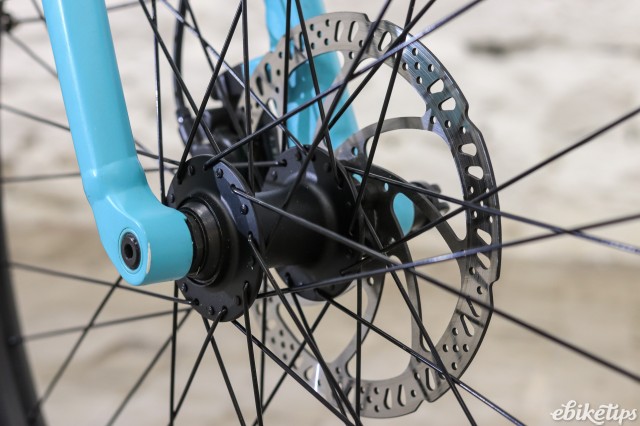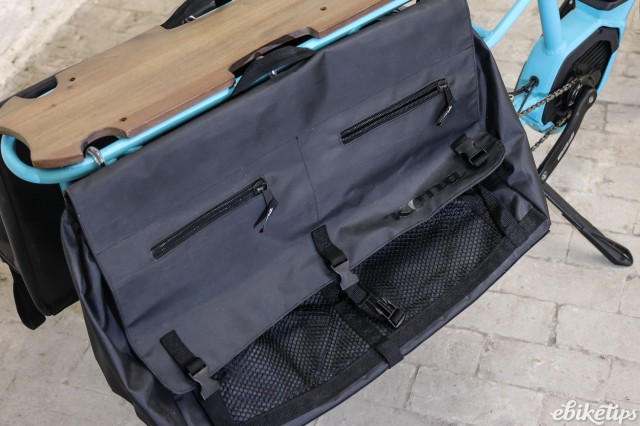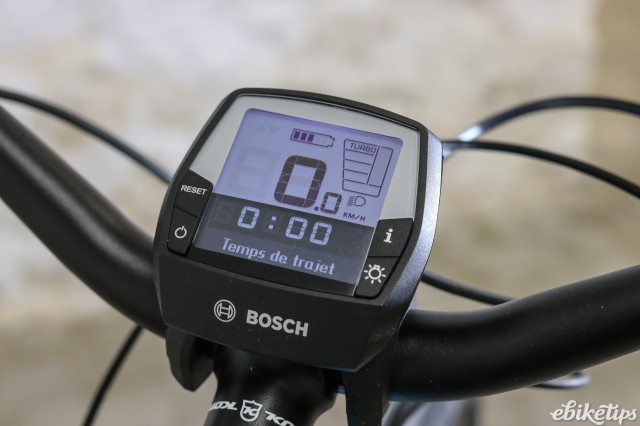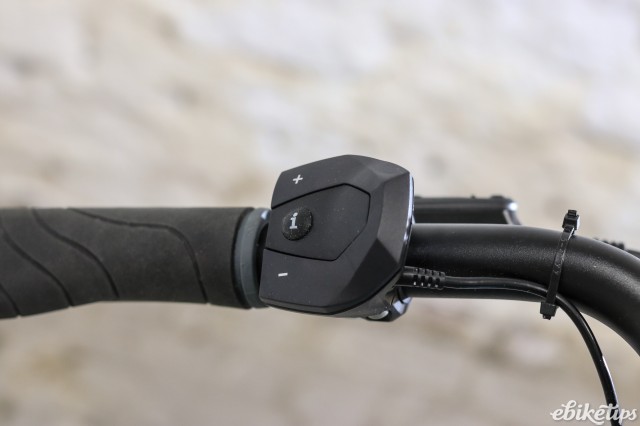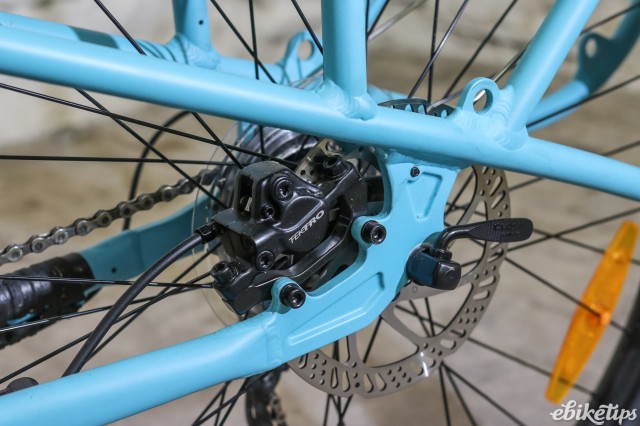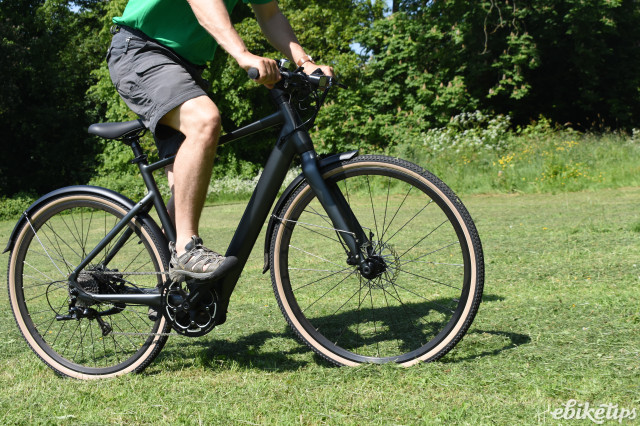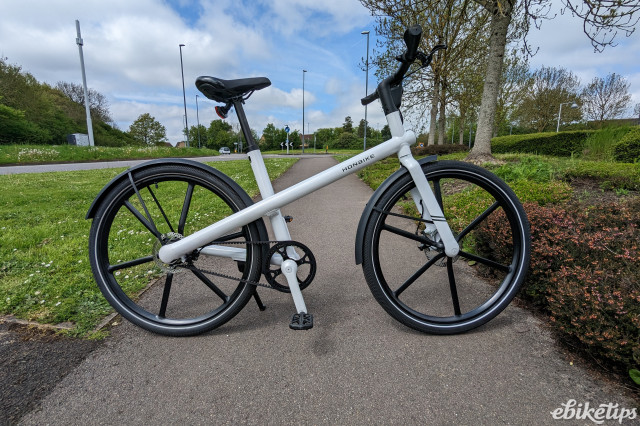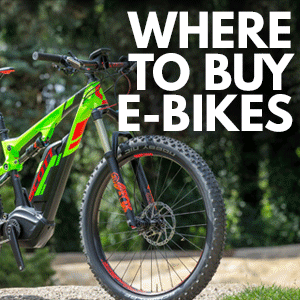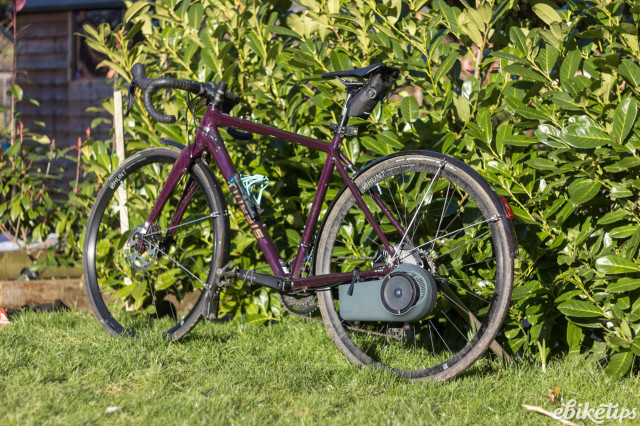Review: Kona Electric Ute
Overview
- Huge panniers and long deck for big capacity
- Powerful motor and sensible gearing
- Compact enough to fit most of the places you'd put a normal bike
- Lighting system not really up to the job
- Tyres are a bit flimsy for loaded riding
- Expensive, especially considering the price of the non-powered version
“Looking to ditch the car?” asks Kona? “The Electric Ute is your answer.” It’s certainly 'an' answer, and if you’re looking to carry a lot more than your sandwiches then it has plenty to recommend, and it could genuinely replace a car for many people. It has some issues, however, and as a result it’s not the best longtail out there right now.
Kona has form here. Look - we tested a previous incarnation way back in 2010. Although frame design and the assistance system have both come on a long way since then, you can see some common DNA. Kona’s non-assisted Ute is still available, and the latest electrified version builds on its well-established formula.
The Electric Ute is a long-tail cargo bike, now built around 650b wheels and a 6061 aluminium frame. The electrics have happily come on a long way since Dave described the previous Electric Ute’s system as “flimsy”, and you’ve plenty of power here thanks to Kona’s selection of the 250w Bosch Performance Line motor with their 500Wh battery pack.
When Kona launched the Electric Ute, Dave took one for a spin at Eurobike a few months ago, and you can enjoy his early thoughts (and curious pronounciation of Ute) here (we're now going with 'Yoot', for the record).
The Performance Line gives a peak torque of 63Nm, a little less than the full-fat 75Nm Performance Line CX, but it’s enough to get you up most stuff, even when you’re carrying some cargo. And this is very much a bike designed to carry cargo. It comes with a couple of huge Kona-branded panniers, which are made of tough waterproof material and held on to the big rack via some metal hooks and bungees. It’s good to see the panniers included with the bike - often these are sold as extras. And they’re huge - most folk will find they’ll swallow a week’s shopping without a problem. We managed to transport a boxed turbo trainer in one!
The rack is integral to the frame, made of chunky aluminium, with an attractive wooden deck on the top. You can fit a couple of child seats, something like the Thule Yepp, via some adaptors, and you can bungee all sorts of things on. Kona’s video shows it being used to carry guitars, beer kegs and a raft of other things. That being said, Kona don’t really go overboard with the options. There’s a child-seat-compatible deck available, but that’s it really. There are no foot pegs, foot rails, monkey bar kits (for bigger kids), padded seatpads or anything available directly from Kona, which is a bit of a disappointment considering how versatile a long-tail can be. Oregon-based SuperKnuckle make some of the above to fit the Ute, but you’ll be paying to get it shipped from the States.
A longtail cargo bike like this differs from one with a front box, also known as a Long John; something like the Packster from Riese + Muller with a front box you can just throw stuff in. On a longtail you need a bit of ingenuity to attach odd-shaped items. If you’re handy with a stack of bungies or straps then you can carry a lot here, and there are plenty of blogs showing what people have loaded a Ute with.
I took a toilet to the tip when I was testing the Packster - I am less confident that I could do the same here, but hey - maybe that’s not everybody’s requirement of a cargo bike. The major advantage of a longtail over a box bike is that it handles much more like a normal bike. The Kona has a long wheelbase so is naturally a rather steady steer, but you can thread it through traffic quite comfortably, and you are not constantly reminded that it's a longer, heavier bike.
The position on the Electric Ute is quite upright, which is a good fit for this bike, but it’s over-emphasised by the idiosyncratic choice of Kona’s swept back HandPlant bar. If I bought this bike, that would get swapped out pretty sharpish - I didn’t get on with having my hands sitting just outside my knees.
This obviously isn’t a small bike, but you could (if you really had to) drag it up a few stairs or store it in a good-sized shed. Both are things which you definitely couldn’t do with some Long John bikes. Unusually for a big heavy e-bike, the Ute is fully rigid - there's not even a suspension fork. It keeps things simple for sure, although the frame is very rigid indeed so I would probably look at fitting something like a Cane Creek Thudbuster seatpost if I was riding around on British roads.
My first ride home from work on the Ute was, erm, eventful. It was dark, and I was relying on the Ute’s built-in lights (powered from the big battery). Busch & Müller make some really excellent lights, but the front light fitted here, the 40 Lux Lumotec Avy according to Kona, is just not powerful enough for actually seeing ahead of you on dark roads. I rode straight into a pothole that I hadn’t spotted at all, and blew out the rear tyre. It’s a 47mm WTB Horizon, so I had thought that pinch flats would be a remote possibility and didn’t have any puncture kit on me. The Horizons are great tyres, but they’re probably a bit flimsy to be standard issue on a bike rated to carry 150kg of rider and cargo. Fitting sturdier tyres would be an improvement. The stock tyres aren't tubeless-ready (although the rims are), so going tubeless to eliminate pinch flats would mean a change of tyres too.
I mentioned above my disappointment with the output of the front light, especially given that speccing a brighter unit would hardly be a major cost. The back light, Busch and Müller's Secula, kicks out enough light, but it’s located on the rear mudguard, meaning that if you have the panniers fitted, they completely obscure it from the sides and it's only visible to eyes directly behind you. I used the Electric Ute in and out of town, with streetlights and without. Only if I was riding it on well-lit protected cycle routes would I be happy with the illumination included. Spending £3700 on an e-bike with lights, and then having to fit your own lights front and rear is pretty disappointing.
The drivetrain is Shimano 9-speed, using a combination of Acera and Deore components - perhaps a bit lower-grade than you might hope for on a bike at this price. The gearing range encourages you to stay within the assisted limit. You spin out once you’re much over 20 mph, and the low end is low enough to get you up almost anything. I found hills which hit high-teens in percentage terms were no challenge at all even with some cargo. On the way back down braking is taken care of by powerful Tektro hydraulics, with a 180mm rotor at the front and 160mm at the back. They provide plenty of stopping power with no drama.
If you like the look of the Ute but don’t need the motor then Kona still offers the unassisted Ute, at a much lower cost of £1,299. Electrics aside, the build is very similar, with the same gears, brakes, wheels, tyres and the included panniers. Round these parts, you need to go up hills to get to most places, but the cost differential isn’t especially favourable to the Electric Ute. You can get whole e-bikes with the Bosch Performance Line motor for less than the difference between the two.
When testing the Electric Ute, I found my thoughts went often to the Tern GSD, and not just because one of the colours it comes in is extremely similar to that used on the Kona. It’s another long-tail, but built around a small wheel frame. It’s £300 more expensive and you don’t get the panniers included for that. That said if it was my money (and at times I’ve been sorely tempted), I would definitely go for the Tern. The smaller wheels make for a more compact bike, and the thought that has gone into features such as the hyper-adjustable stem and seat height, folding handlebars and end-stand-ability mean that it offers a near perfect blend of lugging capability and compact family-friendly usability. This adjustability means that the Tern (in its single size) can be ridden by the whole family, whereas the Kona has a range of sizes more like a conventional bike, and what suits a 5ft person won’t work well for someone much taller.
Why might you prefer the Kona? Well, bigger wheels do roll a bit better over rougher roads (although I’d suggest going tubeless first), and it costs less and comes with nice big panniers included. This is a bike that you could potentially replace a car with. It garnered a lot of enthusiastic looks from colleagues and friends, and you can carry a couple of kids or a whole lot of stuff. It’s not the best of the bunch, though. Right now, that honour still belongs to the Tern.




